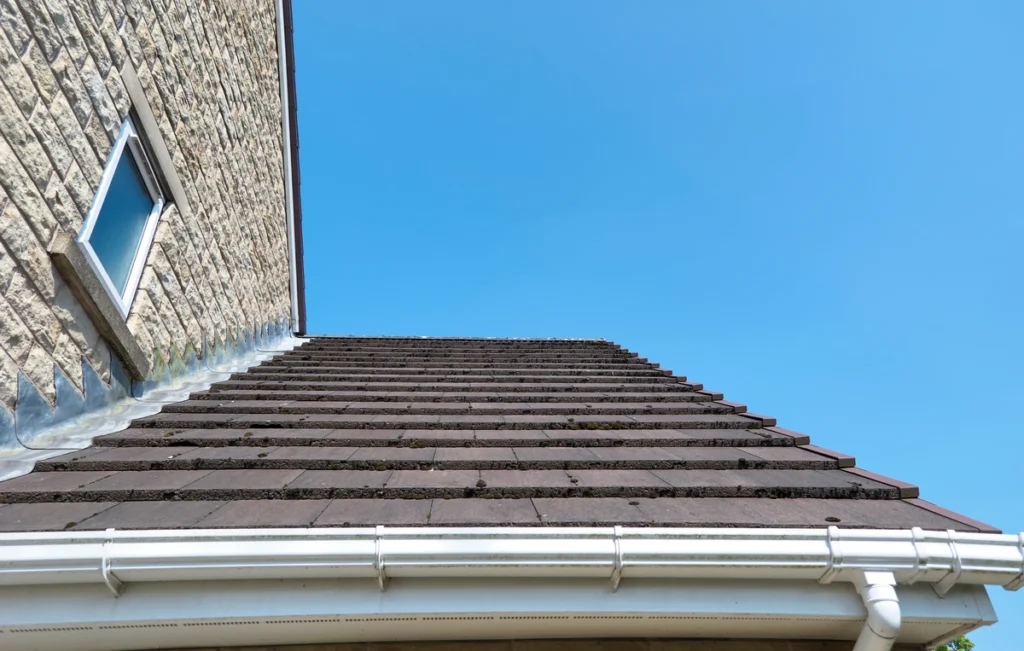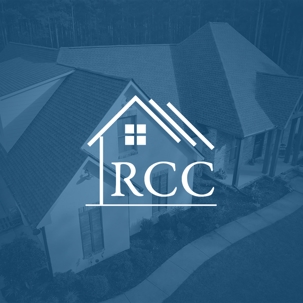Roof flashing is a vital component of your roofing system, but do you know what it actually does? In simple terms, roof flashing is a thin metal material that directs water away from vulnerable areas of your roof, like walls and chimneys. Its primary job is to prevent water from seeping into the tiny cracks and openings in your roof, keeping it watertight and protected against leaks and damage. But there’s more to learn about this essential element! Discover the types of roof flashing, how it’s installed and maintained, and why it’s so important for the longevity of your roof. Don’t miss out on this valuable information—read on!
Key Takeaways

- Roof flashing is a thin metal material that directs water away from vulnerable areas of the roof, such as walls and chimneys, to prevent leaks and water damage.
- There are different types of roof flashing, including step flashing, valley flashing, and chimney flashing. Each type serves a specific purpose in protecting different parts of the roof.
- Proper installation and regular maintenance of roof flashing are essential to maintain its effectiveness in creating a waterproof seal. Regular inspections should be conducted to identify any signs of damage or wear and prompt repairs should be made by a professional roofing contractor.
- Neglecting roof flashing can lead to costly repairs down the line, so it’s important to invest in proper inspection and maintenance to protect your home from water intrusion.
Definition And Purpose Of Roof Flashing
Roof flashing is an essential component of any robust roofing system. Often made from a thin sheet of metal like galvanized steel, aluminum, or copper, it is designed with one crucial purpose in mind – to keep water where it belongs: outside.
Commonly installed around intersections and projections on your roof such as chimneys or valleys between slopes, this thin yet sturdy material goes beneath other roofing materials to direct water away from these vulnerable areas.
The importance of proper installation cannot be overstressed too! A local professional roofer should ensure not only correctly installing new roof flashing but also replacing old damaged ones to maintain watertight conditions.
Importance In Preventing Water Leaks And Damage
A healthy roof is your home’s first defense against harsh weather, be it a torrential downpour or heavy snowfall. That’s where the importance of roof flashing comes into play.
Picture this: raindrops are hitting your rooftop during a typical stormy night. Instead of seeping through the edges, intersections or protrusions in the roofing materials and causing potential damage to ceilings or walls, they meet an obstacle – meticulously placed pieces of flashing.
This thin yet sturdy material – often made out of galvanized steel or aluminum– guides the water off the roof surface and safely away from your property.
With properly installed and maintained flashings in place, roofs can effectively stand up to even severe weather conditions for years on end while keeping internal spaces safe from any watery onslaughts lurking outdoors.
Types Of Roof Flashing

There are several types of roof flashing, including step flashing, valley, common roof flashing material, and chimney flashing.
Step Flashing
Step flashing is a critical component in roofing, designed to act as a bridge between roof shingles and adjacent walls. It’s an effective preventative measure against water intrusion that could otherwise cause costly damage to the structure of the roof features in your home.
The application process involves placing one piece of this thin material – typically constructed from resilient metals like aluminum or galvanized steel – under each shingle.
This creates a waterproof seal vital for protecting “roof to wall” transitions frequently exposed to harsh weather conditions.
Interestingly, when compared with continuous flashing during roofing installations, many professional roofing contractors favor using step flashing materials due to its efficient design and superior protective capabilities against leaks.
Valley Flashing
Valley flashing plays a crucial role in any roofing system; it’s the unsung hero working tirelessly to safeguard your roof. If we envision our local roofing contractor as a mountain range, the valleys would be the areas where two slopes come together forming a lower spot.
This is where rainwater naturally flows toward and has an increased potential for pooling.
Constructed typically of durable metals such as galvanized steel or aluminum, valley flashing is designed to withstand harsh weather conditions. Picture two overlapping panels counter flashing that form the shape of ‘V’.
The upper panel collects water sliding off one slope while deflecting it over its edge onto the lower panel which then safely ushers it towards gutters for proper drainage.
Chimney Flashing
Chimney flashing is an essential part of roof flashing that many people might overlook. It’s a detail installed to seal the joints where a drip edge flashing the roof meets the chimney, preventing any water from seeping in and causing damage.
Unlike shingles, chimney flashing is made of a thin metal material with sealant on one side.
Without proper chimney flashing, rainwater or melted snow can easily find its way into your home through these vulnerable spots. Over time, this moisture can lead to extensive damage not only to your roof but also to the structural integrity of your home.
Chimney base flashing works by securely attaching a piece of thin metal along the joints between your rooftop and chimney base. This waterproof seal keeps water from seeping into these areas while directing it away from other parts of your roof that are prone to leaks, such as valleys or vertical walls.
To summarize, don’t underestimate the importance of chimney flashing when it comes to protecting your home from costly water damage.
Installation And Maintenance Of Roof Flashing

To ensure proper installation, roofing contractors must securely attach each piece of flashing to the roof’s surface using roofing cement or other appropriate fasteners.
Proper Installation Techniques
Proper installation techniques are crucial when it comes to roof flashing. One important aspect to consider to install roof flashing is the use of the right materials. Commonly used materials for flashing include galvanized steel, aluminum, and copper.
Another key factor in proper installation is ensuring that the top flashing material is securely attached to the roof surface. This helps create a watertight seal and prevents any water from seeping through.
Additionally, paying attention to detail is essential when installing flashing around roof protrusions such as chimneys or vents.
Regular inspections should also be carried out to identify any signs of damaged or worn-out flashing.
By following proper installation techniques and conducting regular maintenance, you can ensure that your roof flashing remains effective in preventing water leaks and protecting your home from costly damage caused by moisture infiltration.
Regular Inspections And Repairs
Regular inspections and repairs are crucial for maintaining the integrity of roof flashing. Over time, exposure to harsh weather conditions and general wear and tear can cause flashing to deteriorate, leading to potential water leaks and damage.
Roof repair specialists recommend checking the condition of flashing at least once a year, especially after severe storms or extreme weather events. During these inspections, professionals can assess whether the flashing is securely attached to the roof deck and if there are any signs of corrosion or damage.
Neglecting regular maintenance and ignoring potential flashing problems could result in costly repairs down the line. It’s always better to address any issues sooner rather than later.
For example, let’s say you have an older roof with worn-out base flashings around chimneys or skylights that have not been inspected for several years. These areas may be prone to developing leaks during heavy rainstorms if they haven’t already started leaking unnoticed over time.
Remember that investing in proper inspection and maintenance now will save you from potentially extensive repair costs later on.
Replacing Damaged Or Worn-out Flashing
Regular inspections and maintenance of roof flashing are crucial for ensuring its effectiveness in preventing water leaks and damage. Over time, roof flashing materials can become damaged or worn-out due to exposure to the elements, expansion and contraction, or improper installation.
Replacing damaged or worn-out flashing involves removing the old flashing carefully and installing new pieces in its place. The roofer will ensure that the new top flashing is installed, securely attaches to the roof surface and creates a watertight seal.
Ignoring damaged or worn-out flashing can lead to significant problems down the line. Water can seep into your roof deck, causing rotting wood and compromising the structural integrity of your roof.
By addressing any issues with your roof’s flashings promptly through regular inspections and replacing them when necessary, you can prolong the lifespan of both your roofing system as well as protect your home from potential water damage.
Conclusion
In conclusion, roof flashing is a crucial component of any roofing system. It serves the important purpose of directing water away from vulnerable areas, such as chimneys and roof valleys, to prevent leaks and water damage.
Proper installation and regular maintenance are essential to ensure that the flashing remains effective in creating a waterproof seal. If you notice any signs of damaged or worn-out metal flashing anywhere, it’s important to consult with a professional roofing contractor who can assess the situation and make necessary repairs or replacements.
By taking care of your roof flashing, you can protect your home from costly water damage and extend the lifespan of your roofing system for years to come. If you’d rather have a professional do it, contact Rankin County Custom.

